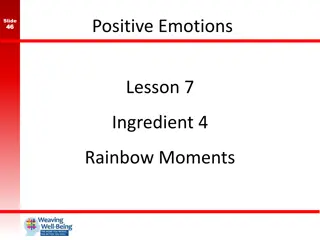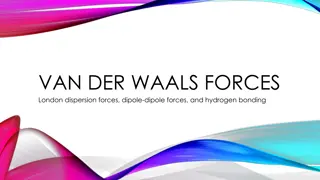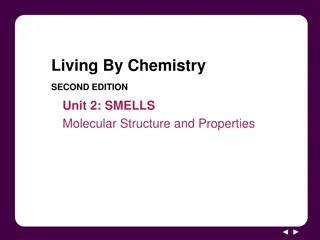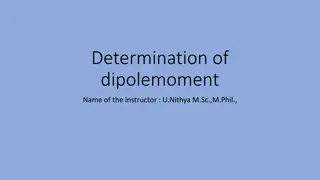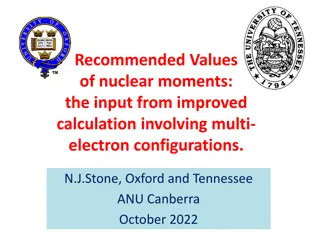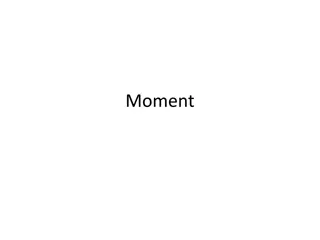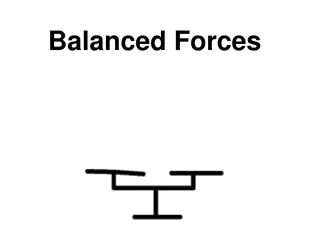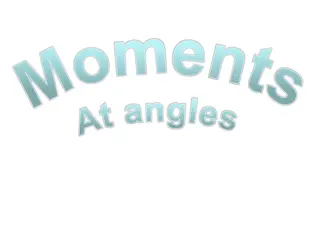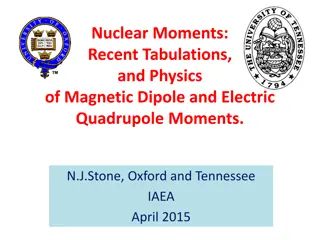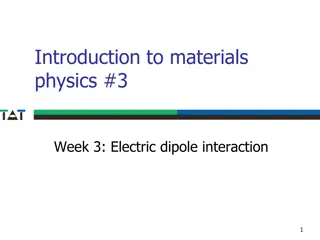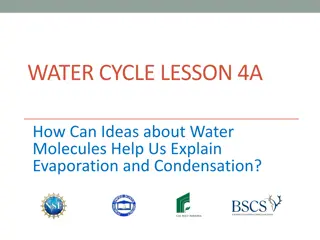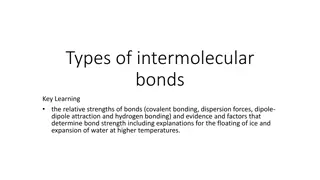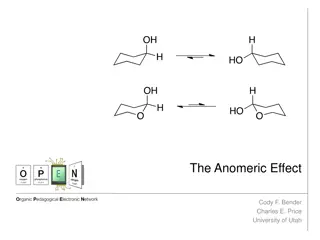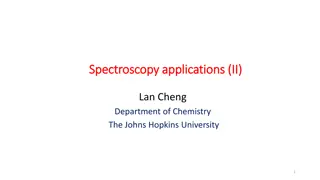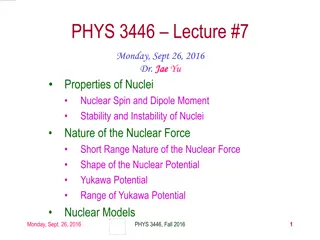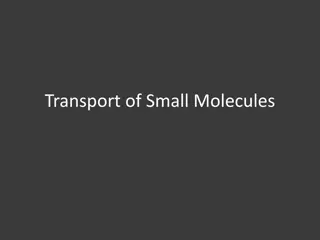Dipole Moments in Molecules
Dipole moments play a crucial role in understanding the polarity of molecules. They are a measure of charge separation and indicate the degree of polarity within a molecule. The concept is explained through examples of different molecules and how the difference in electronegativities affects the dipole moment. The variation in dipole moments for diatomic and polyatomic molecules is also explored, highlighting the relationship between molecular structure and polarity.
Download Presentation

Please find below an Image/Link to download the presentation.
The content on the website is provided AS IS for your information and personal use only. It may not be sold, licensed, or shared on other websites without obtaining consent from the author.If you encounter any issues during the download, it is possible that the publisher has removed the file from their server.
You are allowed to download the files provided on this website for personal or commercial use, subject to the condition that they are used lawfully. All files are the property of their respective owners.
The content on the website is provided AS IS for your information and personal use only. It may not be sold, licensed, or shared on other websites without obtaining consent from the author.
E N D
Presentation Transcript
Dr. S. B Maulage Dept of Chemistry
DIPOLE MOMENT & MOLECULAR STRUCTURE Definition: The product of charges and the distance between the charges . Dipole Moment is a measure of the degree of Polarity of a molecule.
INTRODUCTION INTRODUCTION Dipole moment ( ) is the measure of net molecular polarity, which is the magnitude of the charge Q at either end of the molecular dipole times the distance r between the charges. = Q X r = Q X r
Dipole moments tell us about the charge separation in a molecule. The larger the difference in electronegativities of bonded atoms, the larger the dipole moment. For example, NaCl has the highest dipole moment because it has an ionic bond (i.e. highest charge separation).
Ex Ex. . In CH3Cl molecule, chlorine is more electronegative than carbon, thus attracting the electrons in the C Cl bond toward itself (Figure 1). As a result, chlorine is slightly negative and carbon is slightly positive in C Cl bond. Since one end of C-Cl is positive and the other end is negative, it is described as a polar bond.
For diatomic molecules there is only one (single or multiple) bond so the bond dipole moment is the molecular dipole moment, with typical values in the range of 0 to 11 D. At one extreme, a symmetrical molecule such as chlorine, Cl 2, has zero dipole moment, while near the other extreme, gas phase potassium bromide, KBr, which is highly ionic, has a dipole moment of 10.5 D
For polyatomic molecules there is more than one bond, and the total molecular dipole moment may be approximated as the vector sum of individual bond dipole moments. Often bond dipoles are obtained by the reverse process: a known total dipole of a molecule can be decomposed into bond dipoles. This is done to transfer bond dipole moments to molecules that have the same bonds, but for which the total dipole moment is not yet known. The vector sum of the transferred bond dipoles gives an estimate for the total (unknown) dipole of the molecule.
DIPOLE MOMENTS OF SOME COMPOUNDS DIPOLE MOMENTS OF SOME COMPOUNDS Compound Compound Dipole Moment ( Dipole Moment (Debyes Debyes) ) NaCl 9.0 CH3Cl 1.87 H2O 1.85 NH3 1.47 CO2 0 0 CCl4
POLAR MOLECULES AND DIPOLE POLAR MOLECULES AND DIPOLE- -DIPOLE INTERACTION INTERACTION DIPOLE A polar molecule is a molecule where one end has a positive electrical charge and the other end has a negative charge due to the arrangement or geometry of its atoms. Because polar molecules have a positive and negative charge ends, the positive charge end of a molecule will attract to the negative end of adjacent molecule with the same or different kind of molecule. The attraction beween two polar molecules is called dipole-dipole interaction. The attraction between two dipoles create a very strong intermolecular force, which have great influence in the evaporation of liquid and condensation of gas.
For example For example, Since water are polar molecules, the interaction between water molecules are so strong that it takes a lot of energy to break the bond between the water molecules. Therefore, the boiling point of polar substances are higher than those of nonpolar substance due to stronger intermolecular force among polar molecules.
MATHEMATICAL EXPRESSION u = q u = q xr r u u Dipole moment q Charge on the atoms r distance betw. The charges
UNITS OF DIPOLE MOMENT CGS Unit : Debyes denoted by - D 1 D = 10-18esu.cm q = 10-10esu r = 10-8cm
SI - UNIT SI unit is Coulomb meter Coulomb meter 1D = 3.336 x 10-30C . M.
Dipole moment is Vector quantity having magnitude and direction
DIPOLE MOMENT OF DIPOLE MOMENT OF OF OF CHCL3 Therefore, polar molecules Therefore, polar molecules have... have... asymmetrical shape (lone pairs) or asymmetrical atoms
Identification of Ortho, meta, para Isomers: Bi-substituted Benzene has three isomers i.e. a) Ortho, b) Meta, c) Para substituted benzene.
ORTHO SUBSTITUTED BENZENE. u = 2.6 D Cl Cl Cl Cl
META SUBSTITUTED BENZENE. u = 1.5 D Cl Cl Cl Cl
PARA SUBSTITUTED BENZENE. u = 0 D Cl Cl Cl Cl
THE END Thank You !, - Mr. Maulage S . B.


